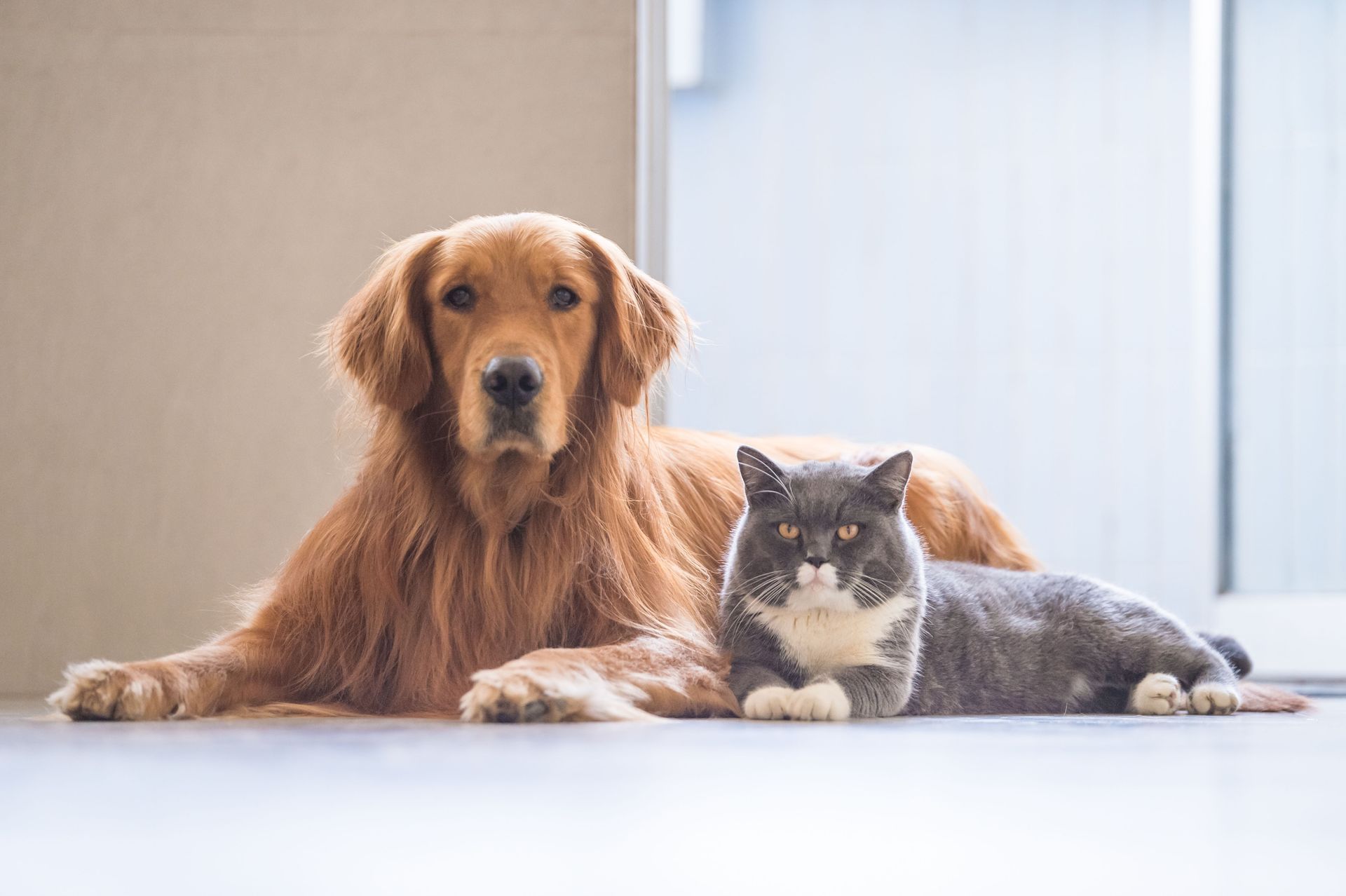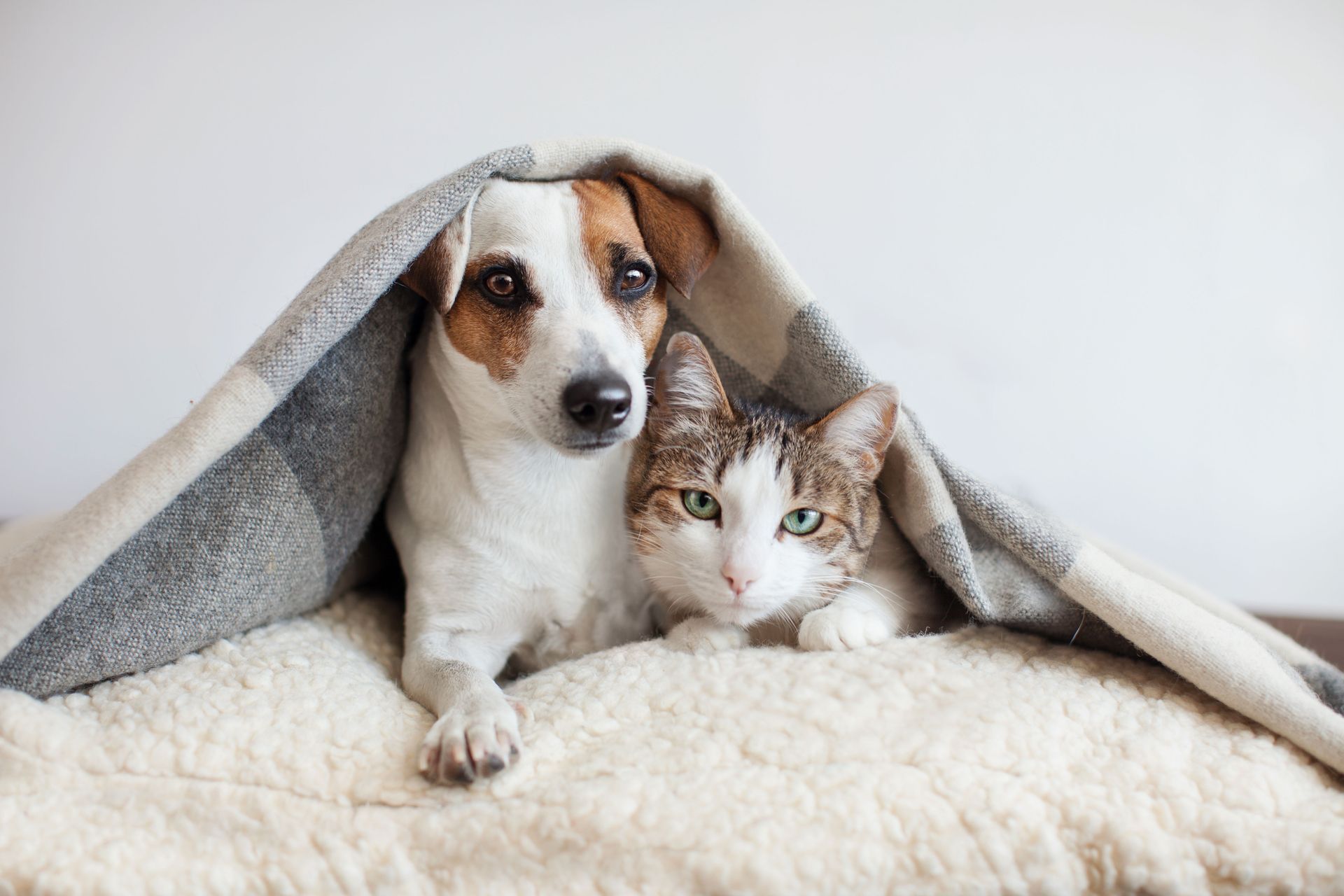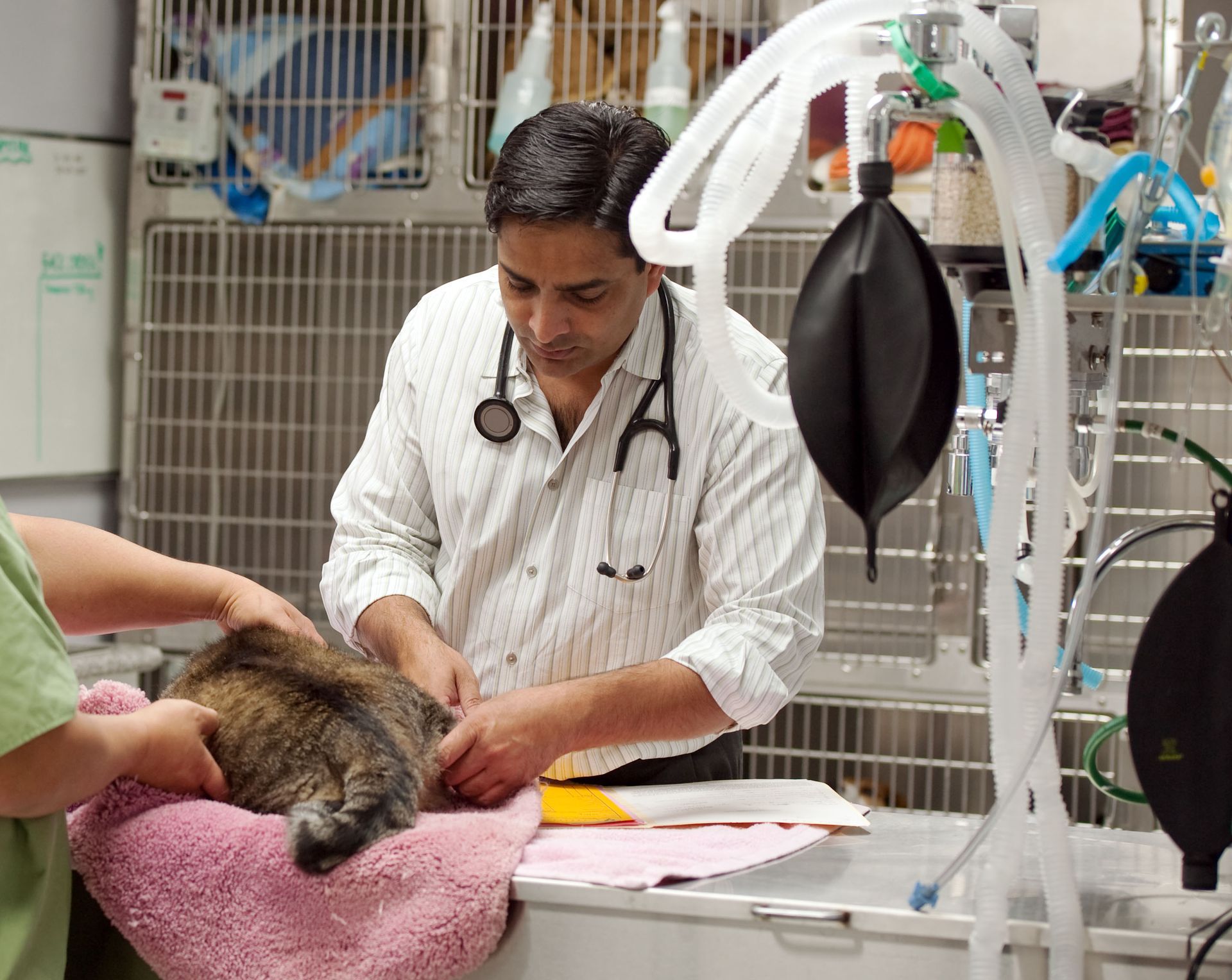Veterinary Non-Compete Clauses
July 15, 2025
July 15, 2025
The Pros and Cons of Non-Compete Clauses
Veterinary non-compete clauses have become a controversial topic. These employment contract inclusions prevent employees from working for or opening a competing business in a specified geographic area and time frame. Once considered standard practice, the veterinary industry is now questioning the utility and enforceability of non-compete clauses.
At Veterinary System Services , we’ve chosen to forgo non-compete agreements, which can unfairly limit veterinarians’ job prospects and career-earning potential. However, many business owners in the profession believe imposing non-compete restrictions is in their best interest. Here, we examine the pros and cons of non-competes and alternative options veterinary practices can employ to earn team member loyalty.
What are non-compete clauses?
Employers use non-compete clauses to protect their business assets. In veterinary medicine, non-competes generally apply only to veterinarians, preventing them from leaving the practice for one nearby and taking clients or staff members with them. Each veterinary non-compete has specific provisions for what the employee can and cannot do and for how long after terminating their relationship with the employer.
Veterinary non-competes have been standard practice for many years, but have several inherent problems. First, they can prevent veterinarians from leaving a practice that isn’t a good fit, causing them to feel trapped and contributing to the industry’s declining mental health. Depending on practice location, they may have to upend their lives and move to a new job outside the restricted area.
Additionally, non-competes remove an employer’s motivation to create a better, more innovative workplace, which harms not only employees but also clients and pets. And, despite the threat of legal action should a vet try to break the clause, they are often unenforceable.
Reconsidering veterinary non-compete clauses
Many in the veterinary community recognize that broadly restrictive non-competes are harmful to the profession and want them to end. And, veterinarians aren’t alone in this quest—the Federal Trade Commision (FTC) ruled to ban non-competes in almost all instances. However, it’s unclear whether or when the ruling will be enforced.
In the meantime, we urge veterinary practices to reconsider using non-compete clauses for the following reasons:
Limited legal enforceability — Non-competes may end up being more trouble than they’re worth, as courts may side with employees over excessively restrictive agreements.
Restricted professional growth — Non-competes can prevent veterinarians from advancing their careers.
Reduced employee morale — Employees who sign non-competes may feel trapped and resentful.
Fewer prospective employees — Non-competes can deter top talent who are looking for flexibility and freedom in their careers.
Stifled innovation — Non-competes lock veterinarians in their roles, contributing to industry stagnation.
At-will employment and positive veterinary practice culture
Some practices may view veterinary non-competes as a way to guarantee that the time and energy they put into training and mentoring veterinarians won’t go to waste. However, this philosophy can lead to a toxic or negative workplace culture.
You shouldn’t need to trap your employees to keep them around. Instead, focus on creating a positive, collaborative, supportive culture and offering attractive compensation and benefits. Asking an employee to sign a non-compete strains your relationship from day one. Instead, start off on the right foot by empowering your new hires to choose their own path and determine if your practice is truly a good fit, without the threat of legal action.
Alternatives to veterinary non-compete clauses
Non-competes aren’t the only option for veterinary practices to protect their interests. It’s completely reasonable to ask employees to sign less-restrictive agreements that don’t limit their career prospects or determine where they can live. Non-disclosure agreements (NDAs) prevent employees from sharing sensitive information, while non-solicitation agreements prevent employees from taking clients or staff members when they leave.
In an evolving veterinary industry, non-compete clauses are becoming increasingly outdated. Eliminating non-competes and adopting less-restrictive non-solicitation agreements will benefit individual veterinarians and the industry as a whole. In an open job market, increased competition will force practices to improve their working conditions and compensation and new and innovative veterinary businesses will thrive.
At Veterinary System Services , we believe in empowering team members and creating a positive workplace culture. Contact us to learn about our services or check out our open positions, so you can take the next step in your veterinary career journey.
At Veterinary System Services , we’ve chosen to forgo non-compete agreements, which can unfairly limit veterinarians’ job prospects and career-earning potential. However, many business owners in the profession believe imposing non-compete restrictions is in their best interest. Here, we examine the pros and cons of non-competes and alternative options veterinary practices can employ to earn team member loyalty.
What are non-compete clauses?
Employers use non-compete clauses to protect their business assets. In veterinary medicine, non-competes generally apply only to veterinarians, preventing them from leaving the practice for one nearby and taking clients or staff members with them. Each veterinary non-compete has specific provisions for what the employee can and cannot do and for how long after terminating their relationship with the employer.
Veterinary non-competes have been standard practice for many years, but have several inherent problems. First, they can prevent veterinarians from leaving a practice that isn’t a good fit, causing them to feel trapped and contributing to the industry’s declining mental health. Depending on practice location, they may have to upend their lives and move to a new job outside the restricted area.
Additionally, non-competes remove an employer’s motivation to create a better, more innovative workplace, which harms not only employees but also clients and pets. And, despite the threat of legal action should a vet try to break the clause, they are often unenforceable.
Reconsidering veterinary non-compete clauses
Many in the veterinary community recognize that broadly restrictive non-competes are harmful to the profession and want them to end. And, veterinarians aren’t alone in this quest—the Federal Trade Commision (FTC) ruled to ban non-competes in almost all instances. However, it’s unclear whether or when the ruling will be enforced.
In the meantime, we urge veterinary practices to reconsider using non-compete clauses for the following reasons:
Limited legal enforceability — Non-competes may end up being more trouble than they’re worth, as courts may side with employees over excessively restrictive agreements.
Restricted professional growth — Non-competes can prevent veterinarians from advancing their careers.
Reduced employee morale — Employees who sign non-competes may feel trapped and resentful.
Fewer prospective employees — Non-competes can deter top talent who are looking for flexibility and freedom in their careers.
Stifled innovation — Non-competes lock veterinarians in their roles, contributing to industry stagnation.
At-will employment and positive veterinary practice culture
Some practices may view veterinary non-competes as a way to guarantee that the time and energy they put into training and mentoring veterinarians won’t go to waste. However, this philosophy can lead to a toxic or negative workplace culture.
You shouldn’t need to trap your employees to keep them around. Instead, focus on creating a positive, collaborative, supportive culture and offering attractive compensation and benefits. Asking an employee to sign a non-compete strains your relationship from day one. Instead, start off on the right foot by empowering your new hires to choose their own path and determine if your practice is truly a good fit, without the threat of legal action.
Alternatives to veterinary non-compete clauses
Non-competes aren’t the only option for veterinary practices to protect their interests. It’s completely reasonable to ask employees to sign less-restrictive agreements that don’t limit their career prospects or determine where they can live. Non-disclosure agreements (NDAs) prevent employees from sharing sensitive information, while non-solicitation agreements prevent employees from taking clients or staff members when they leave.
In an evolving veterinary industry, non-compete clauses are becoming increasingly outdated. Eliminating non-competes and adopting less-restrictive non-solicitation agreements will benefit individual veterinarians and the industry as a whole. In an open job market, increased competition will force practices to improve their working conditions and compensation and new and innovative veterinary businesses will thrive.
At Veterinary System Services , we believe in empowering team members and creating a positive workplace culture. Contact us to learn about our services or check out our open positions, so you can take the next step in your veterinary career journey.


August 19, 2025
Veterinary technicians spend years in intensive training programs to become credentialed professionals. They entered the veterinary field to save lives, provide advanced nursing care, and make a difference for pets and their people. But, in practice, m any credentialed technicians are inappropriately utilized and spend their shifts cleaning kennels and washing, drying, and folding the never-ending pile of veterinary practice laundry. Surely, your team members did not sign up to be licensed laundry professionals. Although every job requires some cleaning, as the facility must remain clean and tidy to minimize disease spread, that shouldn’t be your techs’ main job. Laundry is a necessary evil, but what if you could reclaim that time? Here are five reasons why outsourcing your laundry with Veterinary System Services could be your practice's best decision this year. 1. Harness your team’s talents Credentialed veterinary technicians (CrVTs) are highly trained professionals with advanced nursing skills and invaluable experience. They undergo a rigorous education alongside veterinary students, and that deserves respect. Your CrVTs probably excel at cleaning, too, but that doesn’t mean it's a good use of their talents. Outsourcing your veterinary practice laundry frees up techs to do what they do best—provide excellent care to patients and clients. Your technicians can contribute to the practice’s financial health in other, far more productive ways, such as assisting in surgery, educating clients, tending to hospitalized patients, or keeping the veterinarian’s schedule moving. Plus, technicians who are utilized to the fullest extent of their licensed skills have more job satisfaction. 2. Save time and boost practice efficiency Laundry—which can seem never-ending—is time-consuming for team members, as they load, fold, sort, and restock. Consider what your practice could accomplish if laundry were taken off everyone’s plate—not only your veterinary technicians. Your staff could redirect their energy toward seeing more patients or providing better care. Outsourcing laundry improves overall practice efficiency and ensures you never run out of towels for wrapping patients or surgical gowns for that last-minute emergency procedure. 3. Eliminate hidden costs Doing your own laundry seems like a reasonable solution to help keep operational costs down—your team is already in the building, so they might as well throw in a load of laundry, right? However, doing it yourself has hidden costs: Water and electricity — Constant washing and drying can spike your utility bills. Maintenance — Frequently used washers and dryers need expensive routine repair or replacement. Productivity loss — The time your team spends doing laundry doesn’t generate revenue, while direct patient care does. Outsourcing your veterinary practice laundry is likely more cost-effective in the long run. Pricing is a predictable monthly fee with no surprises related to repairs or leaks. 4. Improve veterinary practice cleanliness Cleanliness in a veterinary practice is about aesthetics and safety. Clients judge a hospital by looks and smells, and maintaining high cleanliness standards protects pets and the community from infectious diseases. However, achieving hospital-grade cleanliness with in-house laundry might take more work than you think. Leaving your veterinary practice laundry to the professionals ensures that your linens meet the highest hygiene standards. Professional equipment, detergents, and disinfectants, plus procedures to reduce cross-contamination, provide a total sanitary environment. 5. Boost morale and retention Your team, especially CrVTs, may feel undervalued when they spend their time and talents on tasks that don’t align with their training and education. Overburdening technicians with non-clinical duties like laundry can lead to burnout and turnover. However, using an outside service for your veterinary practice laundry shows your team you respect their time and credentials, improving team morale and retaining top talent in your clinic. Outsourcing laundry isn’t only about convenience or cost. Using the Veterinary System Services laundry program prioritizes what truly matters—delivering exceptional care and creating a respectful work environment where all your team members can thrive. Contact us to learn more about professional laundry services and give your team the break they deserve!

August 12, 2025
In the bustling world of veterinary practices, where compassion for pets meets the demands of business, one often overlooked aspect is the true cost of employee overtime. It's a topic frequently brushed aside or oversimplified, with many believing the additional hourly wages are the sole expense incurred. However, delving deeper reveals a complex web of hidden costs that can significantly affect a practice’s bottom line and the well-being of its staff and patients. The fallacy of hourly rates in veterinary medicine When questioned about how much a specific employee earns or “costs” the business, veterinary practice managers or owners frequently respond with something along the lines of, "Their hourly rate is $25, so they cost me $25 an hour.” But that view fails to capture the full picture. Beyond the question of base wages lies a myriad of additional expenses—from taxes and benefits to training and turnover—all of which contribute to the true cost of an employee. Understanding the true cost of veterinary employees To understand the real cost of a veterinary team member, you must consider the following factors: Overtime premiums — Overtime isn't only a matter of paying the base wage for extra hours. Federal and state laws often mandate overtime premiums, which can be as much as 1.5 times the regular rate. This additional expense can quickly add up, especially in practices where overtime is common. Burnout and diminished productivity — While it may seem easier to rely on overtime hours to meet business demands instead of seeking additional help, the long-term effects on employees can include burnout, fatigue, and decreased morale, which can lead to decreased productivity, increased errors, and higher turnover rates, not to mention serious mental health effects for your team members. Training and onboarding — Every new employee represents an investment in training and onboarding. When existing staff are stretched thin with overtime, the time and resources available for training diminish, potentially compromising the quality of care and increasing the likelihood of mistakes. Health care costs — Overtime doesn’t only tax the mind; it can also take a toll on physical health. Increased stress, irregular schedules, and inadequate rest can contribute to a host of health issues, ultimately driving up healthcare costs for employees and employers. Turnover and recruitment — The veterinary industry is no stranger to turnover, but excessive overtime can exacerbate the problem. Employees who feel overworked and undervalued are more likely to seek opportunities elsewhere, leading to increased recruitment and onboarding costs for a practice. Confronting the truth about overtime for veterinary professionals It's easy to fall into the trap of believing that overtime is a cost-effective solution to staffing shortages. However, as veterinary professionals, we must confront reality head-on and acknowledge the true burden of overtime. This means taking the time to calculate the full cost of employee hours, including direct and indirect expenses, and weighing them against the benefits of a well-rested, motivated workforce. How to manage the true costs of overtime What can veterinary practice managers do to mitigate the hidden costs of overtime? Here are a few strategies to consider: Evaluate workload and staffing levels — Take a critical look at workload distribution and staffing levels to identify areas of inefficiency or over-reliance on overtime. Invest in staff development — Make training and professional development opportunities a priority to ensure employees have the skills and support they need to thrive. Implement flexible scheduling — Explore alternatives to traditional scheduling models, such as flexible hours or compressed workweeks, to accommodate fluctuating demand without resorting to excessive overtime. Promote work-life balance — Encourage a culture of work-life balance by offering benefits such as paid time off, wellness programs, and employee assistance services. Communicate transparently — Foster open communication with staff about workload expectations, overtime policies, and the importance of self-care. In the fast-paced world of veterinary medicine, the true cost of employee overtime can often be overshadowed by immediate staffing needs and budget constraints. However, by taking a holistic view of employee expenses and acknowledging the hidden costs of overtime, practice managers can make more informed decisions that balance both financial sustainability and employee wellbeing. To discuss how overtime can wrack up considerable costs you may not realize, give our Veterinary System Services team a call. We’ll guide you through the pros and cons of bringing relief staff on board and provide a cost comparison in terms of finances, patient and client care, and employee wellbeing.

August 5, 2025
Veterinary inventory isn’t flashy or exciting for most veterinary professionals, and when it’s going well, the team is unlikely to think about it. However, when inventory systems don’t work, the entire clinic suffers. Stockouts frustrate team members, overstocking wastes money and space, and inventory managers become easily overwhelmed. If this sounds like your veterinary hospital, an overhaul of your inventory systems could help you get back on track. Veterinary System Services offers inventory consulting that transforms clinics and relieves stress on overworked team members. To illustrate how a few key changes can lead to significant improvements in cost control, space usage, and staff morale, here is the story of a clinic in Lone Tree, Colorado, that partnered with VSS to overcome its inventory challenges. The problem Clinic leadership contacted the VSS inventory consulting team after hiring a new team member who had previously used our service. Like many hospitals, their approach to veterinary inventory management wasn’t working for them. The practice spent more than 23% of its revenue on the cost of goods sold (COGS). The practice owner, Dr. Smith, wanted to see this number come down and had tried some tips they had heard about, with no success. Inventory management fell to Sara, a senior technician. Sara preferred working with patients, but she was reluctantly saddled with inventory responsibilities. For her, the job was thankless, and it clearly caused her mental distress. The team was constantly frustrated about stockouts, and Dr. Smith was unhappy with spending. Although they had plenty of storage space, including an entire basement food room, they never seemed to have what they needed. The solution After evaluating the practice’s veterinary inventory management systems, our recommendations included: Conducting a complete count of existing stock Using practice management software to track inventory Setting reorder points based on actual usage Transitioning food sales to an online platform Discontinuing retail extras, such as leashes, toys, and collars Some of the associate veterinarians were reluctant to give up in-house food sales, and Dr. Smith was concerned about losing revenue from retail items. Jane, the practice manager, worried about the disruption to business that a full inventory count would cause. It took some time, but the team overcame these hesitations and made the recommended changes. The results A year after our consultation with the Colorado clinic, we checked in on their progress. On arrival, we were greeted with Sara’s smile; she looked like an entirely different person with a weight lifted from her shoulders. She told us that costs were down, stockouts now rarely occurred, and that she finally got to spend more time with patients and less time putting out inventory fires. During a tour of the hospital, we saw that the retail section had been reduced to a few handmade specialty items that clients couldn’t get elsewhere, and most of the space was dedicated to a streamlined display of prescription diet starter bags. A new controlled substances cabinet, the first in a planned series of organizational solutions, was in place. As recommended, the hospital moved food sales online, which freed up the basement food storage room for a cat boarding area that generated monthly revenue. The team streamlined inventory so much that one of the stock closets had been transformed into a new exam room, creating further revenue opportunities. Overall, the practice decreased COGS by nearly 10 percentage points, an impressive feat for any hospital. Lessons learned Changes to veterinary inventory can be difficult to implement. Teams get stuck in inefficient patterns and feel too overwhelmed to institute change. But this real-life story is proof that impactful change is possible, and it doesn’t have to disrupt operations or tax already overworked team members. The changes this clinic made allowed a reluctant inventory manager to offload some of her duties and return to what she loved: caring for patients. Plus, the practice became more profitable, more efficient, and a better place to work. Contact us to learn more about VSS inventory consulting , medical-grade laundry , relief staffing, and placement services that help veterinary practices spend less and stress less.

